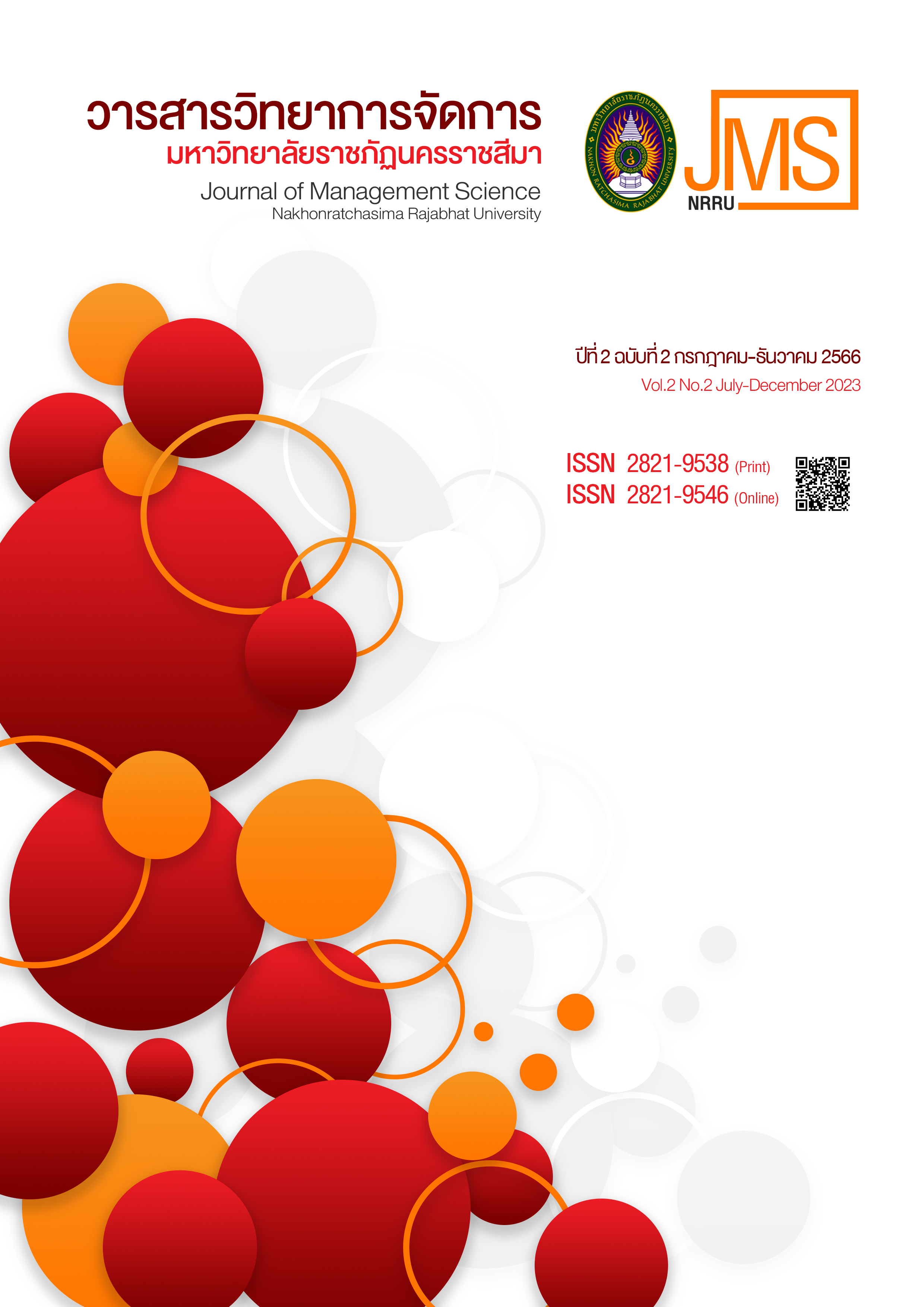Factors Affecting Work life Balance of the Area Revenue Branch Officers in the Revenue Office Regional 9
Main Article Content
Abstract
The research entitled “Factors affecting the work-life balance of revenue officers in the Regional Revenue Office 9” was objected to 1) study the work factors 2) study the level of work-life balance and 3) study the work factors affecting the work-life balance. The data was collected from a sample group of 300 revenue officers by using the questionnaires as a research tool. The statistics, used in the data analysis, were included with the frequency, the percentage, Mean, Standard Deviation and Multiple Regression. The results of the study revealed that most of the samplings were female, aged between 31-40 years, single, and being civil servants with a working period of 1-10 years. For the work factors, it was found overall that the monthly income, the job security and the relationships with co-workers were at a high level. The factors most affected the work were the relationship with co-workers. Moreover, the work-life balance in 5 categories; the work, the family, the life time, the finances, and the knowledge development, were overall at a high level. In addition, the work factor had the highest work-life balance. It was also found that all 3 work factors statistically significant affected the work-life balance.
Article Details

This work is licensed under a Creative Commons Attribution-NonCommercial-NoDerivatives 4.0 International License.
บทความในวารสารเป็นลิขสิทธิ์ของวารสารวิทยาการจัดการ มหาวิทยาลัยราชภัฏนครราขสีมา
บทความที่ปรากฎในวารสารเป็นความคิดเห็นของผู้แต่งเพียงอย่างเดียวซึ่งไม่เกี่ยวข้องกับวารสาร
References
กรมสรรพากร. (2564). “RD SMART TEAM Citizen-Centric Prestigious Awards Sustainable Nation” รายงานประจำปี 2564. [ออนไลน์]. หน้า 7-26. แหล่งที่มา: https://www.rd.go.th/fileadmin/
download/annual_report/annual_report64. Pdf. [20 พฤษภาคม 2565].
กรมสรรพากร. (2565). กองบริหารทรัพยากรบุคคล. กรุงเทพฯ : กองบริหารทรัพยากรบุคคล กรมสรรพากร.
กัลยา วานิชย์บัญชา. (2561). การวิเคราะห์สถิติขั้นสูงด้วย SPSS for windows. กรุงเทพฯ : โรงพิมพ์แห่ง จุฬาลงกรณ์มหาวิทยาลัย.
ณรงค์ โพธิ์พฤกษานันท์. (2556). ระเบียบวิธีวิจัย Research Methodology. กรุงเทพฯ : เอ็กซเปอร์เน็ท.
นรินทร์ทิพย์ ประศรีรเตสัง และดุษฎี อายุวัฒน์. (2564). ปัจจัยที่มีความสัมพันธ์ต่อสมดุลชีวิตกับงานของแรงงานในภาคอุตสาหกรรมและภาคการบริการ: กรณีงานและชีวิตส่วนตัวส่งเสริมซึ่งกันและกัน.
วิทยานิพนธ์มหาบัณฑิต มหาวิทยาลัยขอนแก่น.
ปัทมาวรรณ จินดารักษ์ และ สายสุนีย์ เกษม (มกราคม-มิถุนายน 2562). “สมดุลระหว่างชีวิตและการทำงานกับความหลากหลายของกลุ่มวัย Work-Life Balance and Generations Diversity.” วารสารนักบริหาร 39(1) : 3-11.
เรียม นมรักษ์. (กันยายน-ธันวาคม 2564). “สมดุลชีวิตและการทำงานในพยาบาลวิชาชีพ.” วารสารวไลยอลงกรณ์ปริทัศน์ มนุษยศาสตร์และสังคมศาสตร์. 11(3) : 176-186.
สิริลักษณ์ มงคล. เจ้าพนักงานสรรพากรชำนาญงาน. สัมภาษณ์. 28 พฤษภาคม 2565.
สุภา เข็มแข็งปรีชานนท์, ระวี สัจจโสภณ และศุภรักษ์ อธิคมสุวรรณ. (มกราคม-มิถุนายน 2563). “ปัจจัยที่มีผลต่อความสมดุลระหว่างชีวิตกับการทำงาน ของบุคลากรสำนักงานปลัดกระทรวงมหาดไทย.” วารสารสังคมศาสตร์วิจัย. 11(1) : 169-190.
Herzberg, F. (1959). The Motivation to Work. 2nd ed. New York : John Wiley.
Krejcie, R. V. & Morgan, D. W. (1970). “Determining sample size for research activities.” Educational and Psychological Measurement. 30(3) : 607-610.
Merrill, A. R. & Merrill, R. R. (1961). Life matter: Crating a dynamic balance of work, family, time and money. New York : McGraw-Hill.
Mondy, R. W. (1996). Human Resource Management. 6th ed. New Jersey : Prentice-Hall.
Steers, R. M. & Porter, L. W. (1991). Motivation and work behavior. 5th ed. New York : McGraw-Hill.
Subramaniam, A. G., Overton, B. J. & Maniam, C. B. (January 2015). “Flexible working arrangements, work life balance and women in Malaysia.” International Journal of Social Science and Humanity. 5(1) : 34-38.


